note: if you want to skip the words, and just check out the pictures, you can find them all here: honey harvest, a set on flickr.
the hives
dan has 4 hives, all lined up in a perfect, shady clearing well away from the house or anything that would disturb the bees. the two in the middle are parent hives, and the two on the edges are child hives. this means that he's using the first two colonies to set up two new colonies in the smaller hives. the parent hives are normally much taller, but dan had already pulled out the boxes we were going to harvest when i got there. as the colonies grow, the hives will as well, but you start the child hives small and with the hive entrance facing in the opposite direction from the parent hives. if you look closely at the middle picture, you can see the bees coming in and out of the entrance on the bottom level of the hive. there's a stump in the middle of the clearing that's hollowed out and filled with water for them to drink. the bottom picture is the view of the top of the clearing, and when you stand there, you can see the bees zooming in and out of the clearing like tiny dive-bombers.the stucture of supers
each hive consists of a stack of wooden boxes called supers, and each super contains 10 frames, which are wooden frames in which the bees build honeycomb that gets filled with everything bees need: eggs and larvae, pollen, and eventually, honey. when you pull the supers, you suit up in protective gear, smoke the bees to calm them, pull the boxes out, inspect them to make sure they are not brood chambers (ie, filled with eggs, larvae, baby bees, etc.), brush off the bees with a paintbrush, and take 'em into the house--all before the bees get wise to your game and come after you. this is the part i didn't get to help with, about which i was both relieved and sad. honestly, i don't know if i could lift a full super--they are pretty heavy even without a full load of honey! the bees have spent all spring gathering pollen, turning it into honey, which they put into the combs in the frames, and capping the honeycomb cells with wax as each one was filled. the picture on the bottom of this set is a full frame, and the white/yellow coating you see are the beeswax caps on the honeycomb cells.processing the frames
so, to get the honey out of the frames, we must first remove the caps. dan has this special knife for cutting them off--it's an electric knife shaped like a flat sword that heats up so that it melts the wax enough to cut through it. this process is straightforward but a little tricky. you stand the frame up and hold it with one had, while skimming off the caps with the other. you want to cut deeply enough to open the comb without gouging the it, lest you a) lose too much honey, and b) damage the comb, which will be returned to the bees after the harvest is complete. some people take the comb for the wax, but dan lets the bees have it back so that they spend less time building new comb and more time making honey. makes sense to me. the pointed sword edge of the knife is essential for getting the caps off in the corners. it's also worth noting that this knife is HOT, which means the honey that does come out of the comb at this stage is also HOT, and hot honey is more than a little bit like napalm. there's quite a risk of burning here. i cut a couple of the frames, but dan did most of them, as he's about 14 times faster than me. he makes it look easy and simple, but trust me--it's not. as you cut the caps, you just let them fall into a pan to deal with later. they can be used for any number of things of course, primarily candles and seeding new frames for new bees. the bottom picture is what a very full freshly capped frame looks like. that one is now ready for processing.next up, spinning, straining, and pouring!
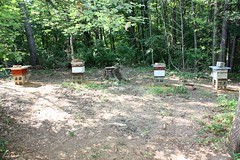
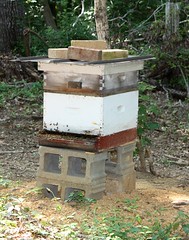
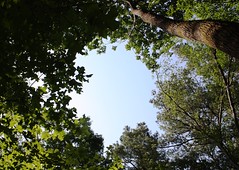
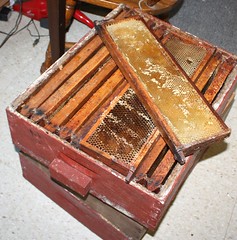

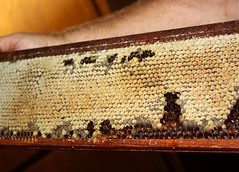
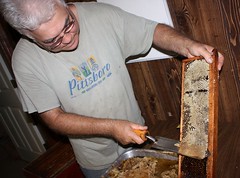
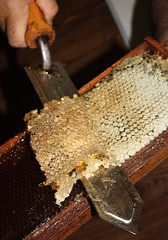
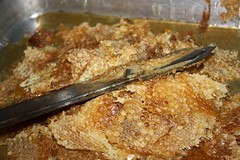

1 comment:
Jackie, I love this psot, can't wait for part 2! We just got bees (2 hives) less than 2 weeks ago. I don't think we're going to be able to rob them of any honey this year, since it is so late to get them established and they will need all they can make between now and fall to get through the winter. But they will pollinate our pumpkins and squashes and stuff, which is why we really got them! Also, I just made some strawberry jam with honey instead of sugar (my bro-in-law's NC honey), and it is awesome! As usual, wishing you and I lived nearer each other ...
Post a Comment